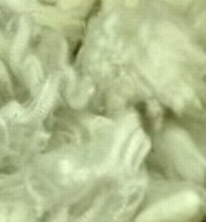Australian Wool Industries Secretariat Inc (AWIS) releases wool sales report for week ending September 28. The Australian Wool Exchange (AWEX) Regional Indicators finished 0.9% lower, on average, at sales in Sydney, Melbourne and Fremantle this week when the US exchange rate rose by 0.3% The EMI was down by 0.6% in Australian currency and by 0.4% in US currency.

The market started in a similar manner to the previous week, with an easing in the Merino fleece wools, and with generally stronger demand for the Merino non-fleece wools. Crossbreds also appeared to do better than the Merino fleece wools. These trends followed a pattern that has been seen in most of the last five to six weeks. 23 and 24 micron wools were in limited supply and were least affected.
Thursday was a generally better day, with most AWEX MPGs (apart from the22 to 24 micron wools) remaining firm, or slightly up in the North and the South. There were further falls in the West, possibly because most orders were filled earlier in the day in the Eastern States sales.
Overall, the finer wools did a little better than other Merino wools. A rise in the US exchange rate on Thursday meant that the change in the Eastern Market Indicator (EMI) in US currency was plus 6¢ for the day.
The EMI is 253¢ (-21.2%) less than in the same week last year and 130¢ (-12.1%) less than at the start of the season. The WMI is 243¢ (-20.6%) less than in the same week last year and 137¢ (-12.7%) less than at the start of the season.
In other countries, the South African Cape Wools Indicator was down by 0.8 %% in Rand and by 1.1% in US currency since last week. In New Zealand, the Wool Services International crossbred Indicators were mixed, with fine crossbred fleece quoted as 2.5 to 5% cheaper and coarse crossbred fleece as 2% dearer.
Among other fibres, cotton Futures up to July next year all fell by 3.0 to 3.5%. December Futures fell steadily all week to 70.65¢ on Friday, down by 3.5% since the previous week and down by 6.9% over the two week period.
35,633 bales were on offer, compared with 41,074 bales last week. 7.4% were passed in, comprised of 6.6% in Sydney, 7.2% in Melbourne and 9.3% in Fremantle. Pass-in rates for Merino fleece and skirtings were 8.6% and 4.1%, respectively.
33,002 bales were cleared to the trade.
Offerings continue to be below last year's levels. This week's offering was 13,809 bales (-27.9%) less than the same week last year). The year-to-date offering is 64,917 bales less (-14.2%) than at the end of the same week last year.
Source:
http://www.fibre2fashion.com/news/textile-news/newsdetails.aspx?news_id=116425






